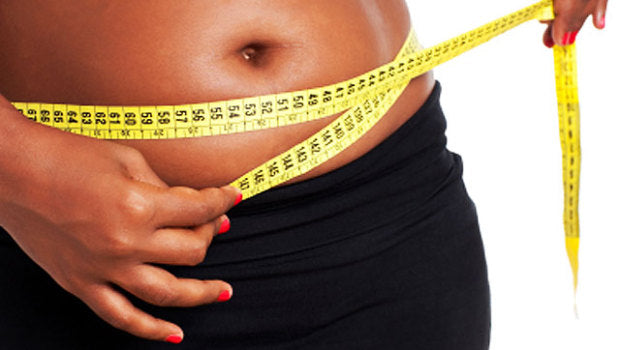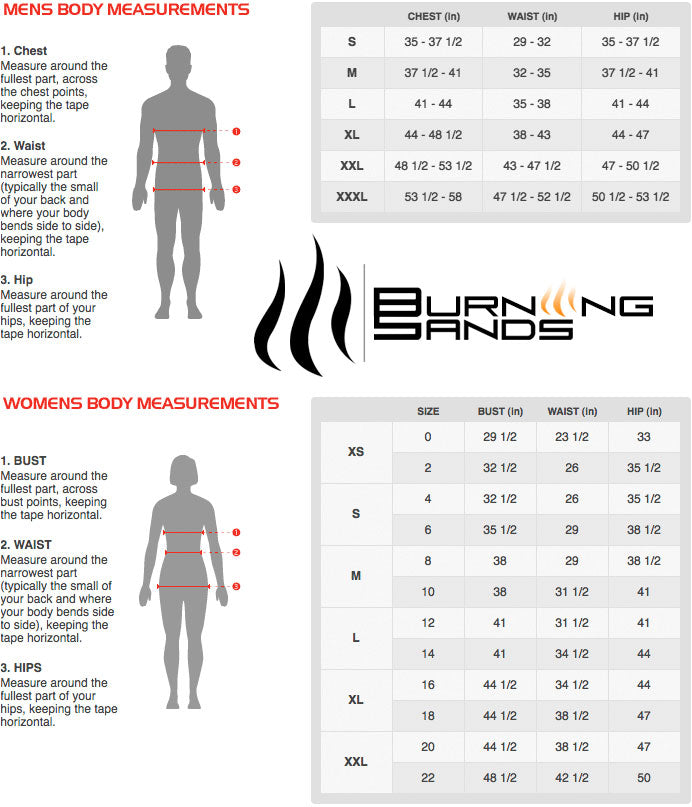Holiday Eating Tips: Avoid That Unwanted Weight Gain
Posted by CHANELL ROSE

Avoiding holiday weight gain may sound as feasible as Santa fitting down billions of chimneys on Christmas Eve, but we promise there are logical strategies to stay on track. Many of us experience weight gain during the festive winter months, but packing on a few pounds in December is far from inevitable.
Don’t get us wrong: The holiday season is all about celebrating, togetherness, and indulging—in moderation. So pass the eggnog and let’s tackle navigating holiday food spreads, hectic schedules, and sidelined gym routines.
1. Eat before drinking and celebrating.
Skipping breakfast or lunch in order to “save your appetite” probably isn’t the best weight-maintenance tactic.Neural responses to visual food stimuli after a normal vs. higher protein breakfast in breakfast-skipping teens. While the jury’s still out on how important breakfast truly is, not eating until the afternoon may lead to binging later on. Breakfast consumption affects appetite, energy intake, and the metabolic and endocrine responses to foods consumed later in the day in male habitual breakfast eaters. Our advice? Stick to a reasonably sized breakfast with plenty of protein, which will keep you fuller longer and temper the urge to stuff your face later.
2. Pick protein.
Like we just mentioned, protein can help maintain a healthy weight because high-protein diets are associated with greater satiety. Effects of a high protein diet on body weight and comorbidities associated with obesity. Make sure to serve up some turkey, roasted chicken, or prepare animal-free alternatives like quinoa, lentils, or beans.
3. Bring your own.
Rather than try to figure out what’s in every dish at a friend’s party (or avoid eating altogether), bring a healthy side dish or dessert. Taste the what you want, but know you have a healthy alternative to fall back on.
4. Eat and chew slowly.
Eating slowly may not be easy when appetizer options are endless, but it pays off to pace yourself. The quicker we eat, the less time the body has to register fullness. Eating slowly increases the postprandial response of the anorexigenic gut hormones, peptide YY and glucagon-like peptide-1. Eating slowly led to decreases in energy intake within meals in healthy women. So slow down and take a second to savor each bite of baked brie or scoop of spiced nuts.
5. Serve meals restaurant-style.
When you sit down for the main event, leave food in the kitchen (away from reach) rather than display a basket full of piping hot rolls, multiple casseroles, and an entire turkey directly on the table. When you’ve cleaned your plate, take a breather, and then decide if you really want seconds. Changing up the environment—in this case, by leaving food near the stove—can help reduce overall food intake.
6. Fill up on fiber.
Snacking on vegetables and other high-fiber items like legumes can help keep us fuller, longer (though there’s always space for dessert). Give the vegetable platter a second chance with a healthy, tasty dip.
7. Use smaller plates.
Plate sizes have expanded significantly over the years.The largest Last Supper: depictions of food portions and plate size increased over the millennium. Whenever possible, choose the smaller salad plate (8-10 inches) instead of a tray-like one (12 inches or more). Using smaller plates can actually make us feel fuller with less food. The brain associates a big white space on the plate with less food (and smaller plates generally require smaller portions).
Cutting butter and oil can slash calories (and it’s easy to swap in foods like applesauce, avocado, banana, or flax into holiday baked goods!), but not all fats are bad fats. We need fat in our diets to provide energy and absorb the fat-soluble vitamins A, D, E, and K, plus fat helps us feel full.Get healthy monounsaturated and polyunsaturated fats from avocados (hello, guacamole), nuts, and olive oil (in baked goods, on veggies, or in homemade dressings). Bonus: Combining fat with fiber—like dipping veggies in guacamole—has been shown to increase fat’s power to make us feel full.
9. Ditch added sugar.
Holiday cookies, cakes, and pies are nothing short of tempting, but all that added sugar may increase the risk for cardiovascular disease and obesity.Consumption of added sugars and indicators of cardiovascular disease risk among US adolescents. Stick to sugar that comes in its natural form (fruits, veggies, and whole grains) and try small tastes of the desserts you’re truly craving rather than loading up a full plate of bland cookies.Sugar-sweetened beverages, weight gain, and incidence of type 2 diabetes in young and middle-aged women.
10. Sneak in the veggies.
Munching on vegetables has long been recognized as a way to protect against obesity. Mix puréed veggies (like pumpkin) into baked goods or casseroles, or sneak them into pasta or potato dishes. Adding veggies increases fiber, which helps make us fuller. Dietary fibers reduce food intake by satiation without conditioned taste aversion in mice.
11. Just say no.
Though your relatives may encourage overeating by shoving seconds onto a cleaned plate, it’s OK to respectfully decline. “I’m full” or “I’m taking a break” should be enough for friends and family members to back off (and give you time to decide if you’d really like more).
12. Wait before grabbing seconds.
Like we’ve mentioned, the quicker we eat a meal, the less time we give our bodies to register fullness. Eating slowly increases the postprandial response of the anorexigenic gut hormones, peptide YY and glucagon-like peptide-1. Since it takes about 20 minutes for the brain to get the message that dinner’s been served, it’s best to go for a walk or chat with friends before dishing up seconds.
13. Take it easy on the white stuff.
Simple carbs are often the white stuff—white bread and refined sugars (like those in soda and candy). These foods provide energy, but often lack the same nutrients as complex carbohydrates (which are found in starchy foods, such as legumes, potatos, corn, and whole grains). While some simple carbs can be good for us (a.k.a the kind found in fruit and low fat dairy products), in general, the body breaks down simple carbs more quickly than the complex kind, which creates a spike in blood sugar (insulin) that can leave us feeling hungrier, faster. The role of carbohydrates in insulin resistance. Stick to whole grains (whole-grain bread, brown rice, or quinoa) and stay full on healthy proteins (like we mentioned previously).
14. Invest in some toss-away tupperware.
Before guests leave you with half-full platters of food, have some Tupperware at the ready. Load up containers for friends and family to hand out as they leave. Bonus points for getting containers that are holiday-themed or for adding a festive bow to your parting gift.
15. Freeze it.
If you end up with loads of leftovers on your kitchen counter, pack up the extras and store them in the freezer for a later date. Studies show that when food is out of sight, you’ll be less likely to reach for a second helping.’I just can’t help myself’: effects of food-cue exposure in overweight and lean individuals.
Though turning off the TV during any football game or family movie might feel like a sin, eating while watching television is linked to poor food choices and overeating.Mediators of longitudinal associations between television viewing and eating behaviors in adolescents. Plus, getting sucked into It’s a Wonderful Life or Elf may bring on mindless eating, since it can be easy to lose track of just how many chocolates or candies you’ve had. And it’s not just the mindlessness of watching television that’ll get us. Commercials for unhealthy foods and drinks may increase our desire for low-nutrient junk, fast food, and sugary beverages.
17. Chew gum.
Studies have conflicting results on whether chewing gum will actually help curb your appetite and lead to weight loss in the long run. Acute and chronic effects of gum chewing on food reinforcement and energy intake. However, in the short-term, chewing can keep you busy when socializing amongst a sea of hor d’oeuvres or when you’re full but still eyeing a second plate of dessert.
18. Turn your back on temptation.
The closer we are situated to food that’s in our line of vision, the more we’ll actually consume. The office candy dish: proximity’s influence on estimated and actual consumption. A simple fix? Face away from the dessert spread to listen to cues from your gut rather than your eyes.
19. Beware of booze.
Not only does alcohol add unnecessary calories to your diet, but getting boozy has another effect on us, too. Drinking too much in the presence of champagne, eggnog, wine, and beer can make us lose our inhibitions around food and start eating irresponsibly. Take it easy with the bubbly before you start saying things like, “Eh, what’s one more cookie?”
20. Cave in to cravings.
Finally, a suggestion we can all get behind. It’s smart to acknowledge a few cravings instead of pushing them away completely. Caving to a craving—as long as it’s in moderation—can curb the desire to go at it like a kid in a candy store. Forbidding a specific food or food group during the holiday season may only make it more attractive. Still want more of that apple pie after a couple of bites? Try thinking of your favorite holiday activity, like opening presents, watching Christmas movies, or playing in the snow. Research shows that daydreaming about pleasant activities or distracting yourself with just about any activity can reduce the intensity of food cravings.
21. Choose tall and thin.
When you’ve got a hankering for some seasonal eggnog, reach for a tall, thin glass, not a short squatty one. Research shows people pour less liquid into tall glasses than into their vertically challenged counterparts. With a taller glass, you’re likely to down less in one sitting (which is especially helpful when drinking booze).
22. Gulp H2O
Drinking water helps people feel full, and as a result consume fewer calories. Rather than guzzling calorie- and sugar-laden sodas and juices (which are associated with increased body fat and blood pressure) treat yourself to a glass of wine with dinner and keep your allegiance to water for the rest of the day. Effects on uric acid, body mass index and blood pressure in adolescents of consuming beverages sweetened with high-fructose corn syrup.
23. Meditate.
Emotional eating to make ourselves feel better when we’re sad or anxious can interfere with weight loss goals. But meditation—using techniques like muscle relaxation, deep breathing, and mindfulness—can help binge eaters become aware of how they turn to food to deal with emotions. This is especially important at parties where there’s a ton of food on display.
24. Set realistic goals.
Come New Year’s resolution season, it’s easy to set lofty goals about weight loss (i.e. drop three dress sizes by February!).Weight loss goals and treatment outcomes among overweight men and women enrolled in a weight loss trial. Since impractical targets can slow down long-term weight-loss, it’s important to address those goals before making any health and fitness changes. Write down your goals—keep them specific and attainable—and post them somewhere highly visible, like the refrigerator door. If your goal is “stick to two cookies at every holiday party” seeing it periodically may help you commit.
25. Stay positive.
Many of us demonize certain foods and even punish ourselves for indulgences. Instead, positive messages like “I can control my eating” or “I’m proud that I ate responsibly today” can reframe our relationship with food. Research shows positive expectations are associated with weight loss.Even if it feels a little silly, try telling yourself at least one positive affirmation per day.
26. De-stress.
The holiday season is full of cheer, but it can also be stressful keeping up with family get-togethers and paying for all those gifts. Unfortunately, a lot of stress can trigger increased eating and cravings, especially for sugary carbohydrates. If family time (or being away from family during the holidays) has you feeling overwhelmed, try out one of these ways to reduce stress before downing hot chocolate and cookies.
27. Let go of limitations.
No, we’re not talking about unbuttoning your pants at the dinner table. Before hitting up holiday parties, remember that a good workout isn’t limited to a gym or the track. It’s easy to use your bodyweight—even in small spaces—to work up a sweat.
28. Get functional.
Functional exercise has been shown to increase strength and balance and reduce risk of injury, all while working multiple muscle groups at the same time. It also means you can squeeze in an effective mid-Christmas-movie-marathon workout in a shorter amount of time.Strength outcomes in fixed versus free-form resistance equipment. All that movement promotes muscle gain, and over time, that can increase metabolism.Exercise improves fat metabolism in muscle but does not increase 24-h fat oxidation.
29. Sleep smart.
Though there’s likely no stopping the urge to wake up early on Christmas morning, getting enough sleep can help shave off some pounds, since sleep loss is linked to changes in appetite.Impact of sleep and sleep loss on glucose homeostasis and appetite regulation. Getting enough sleep has also been associated with less weight gain. Longer sleep duration associates with lower adiposity gain in adult short sleepers. Practice good sleep hygiene, like turning off electronics in the bedroom and avoiding high-fat foods at night.
30. Partner up.
Research suggests we perform better on aerobic tasks like running and cycling when exercising with a partner.Aerobic exercise is promoted when individual performance affects the group: a test of the Kohler motivation gain effect. Two-player partnered exergame for obesity prevention: using discrepancy in players’ abilities as a strategy to motivate physical activity. If you’re home for the holidays, call up a friend or family member for a gym date or a home workout with our favorite partner exercises, including medicine ball lunge-to-chest passes, and clapping push-ups.
31. Move it and lose it.
A simple phrase for losing weight is to move more and eat less. The secret here—like we said before—is that moving doesn’t just mean hitting the track or going to the gym. Make a conscious decision to get more steps into the day by taking the stairs or parking the car far away from the grocery store entrance. Before curling up around the fire, round up family members for a hike or snowshoeing session.
Ori




